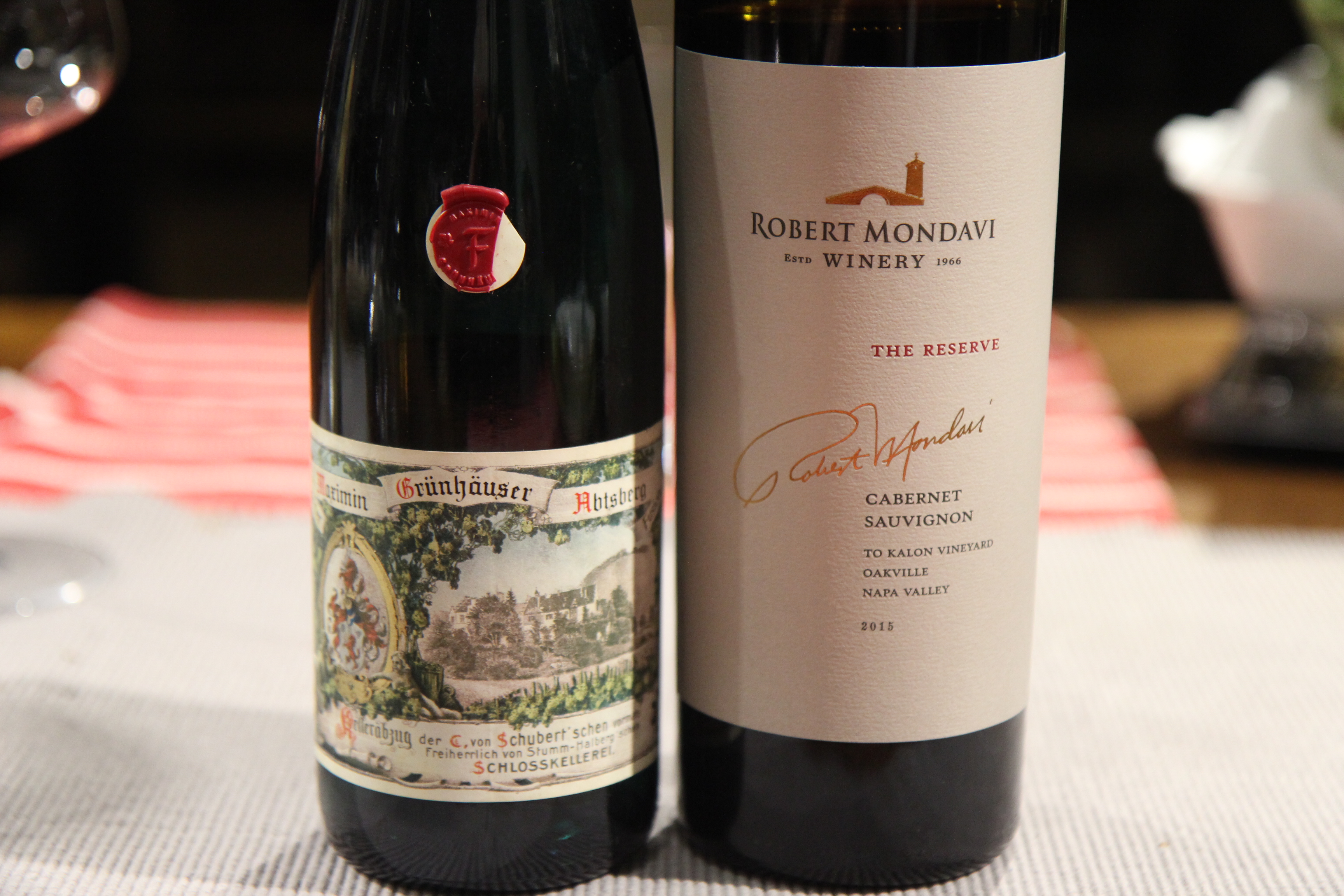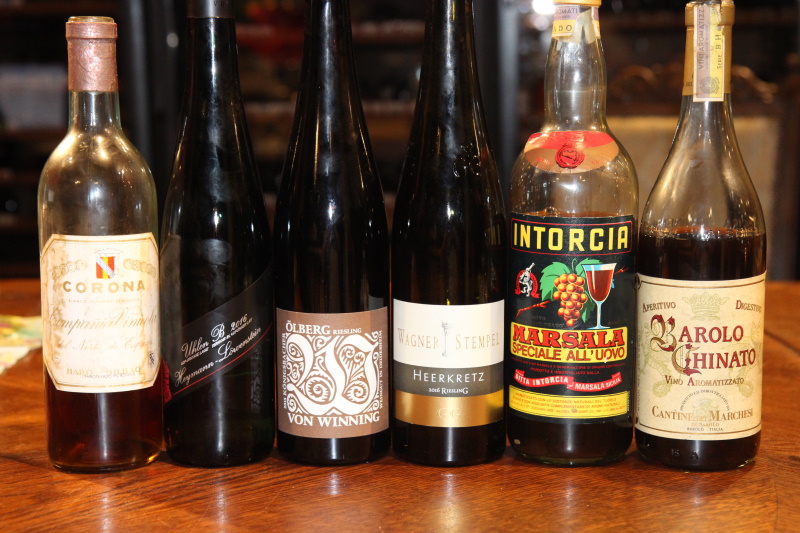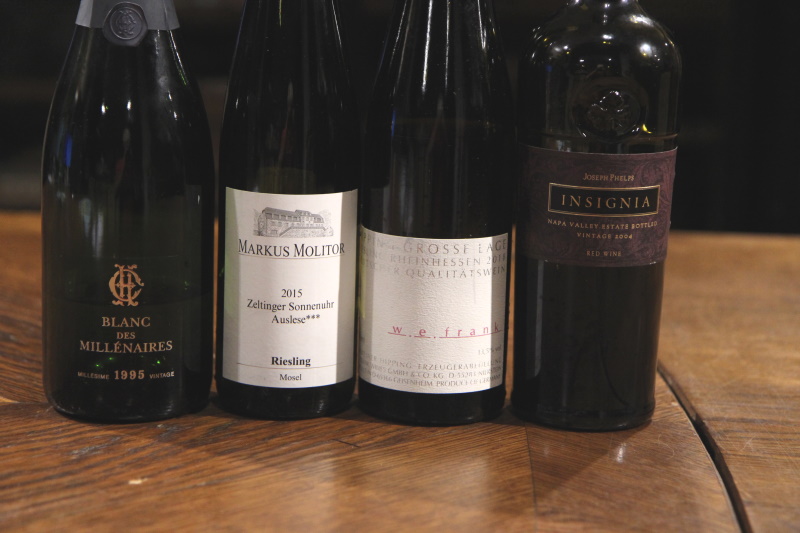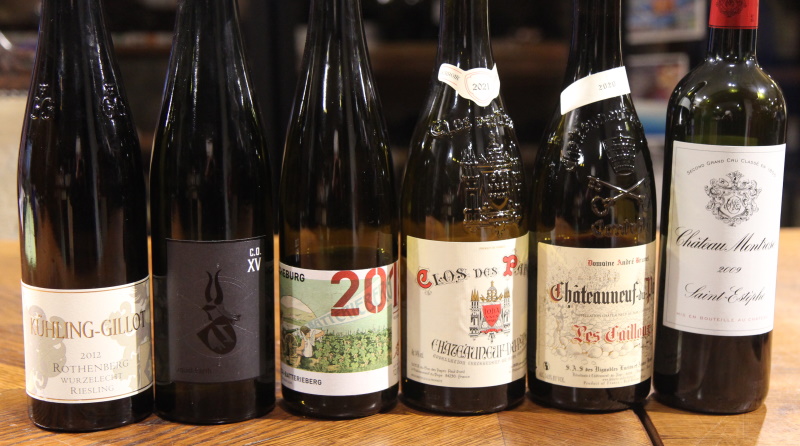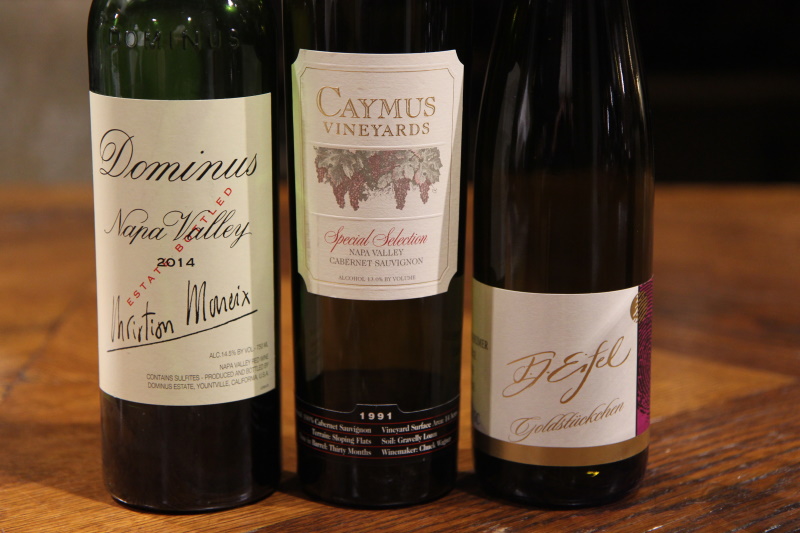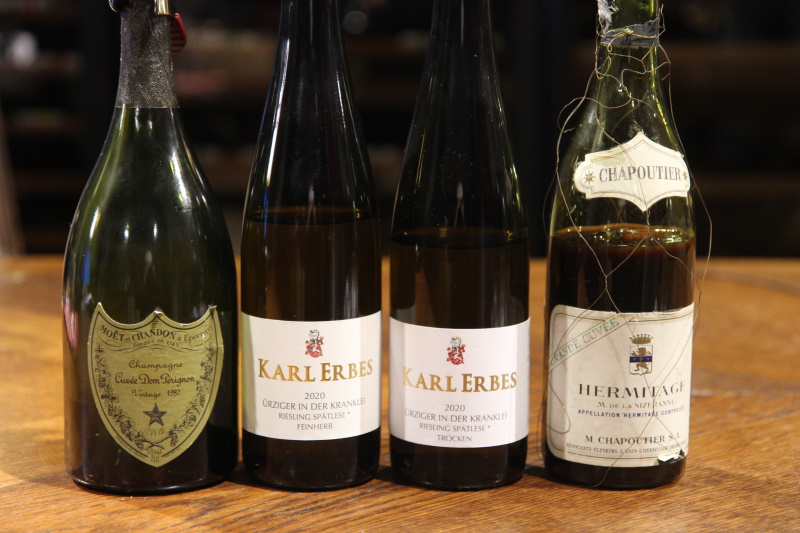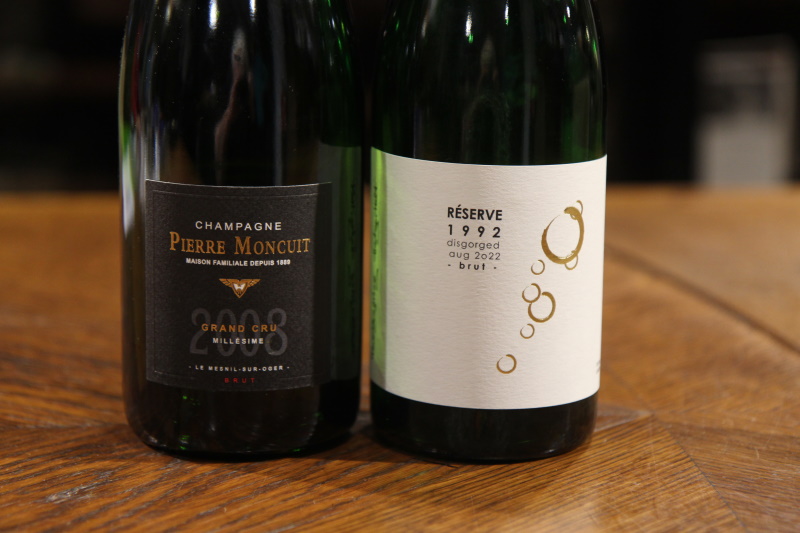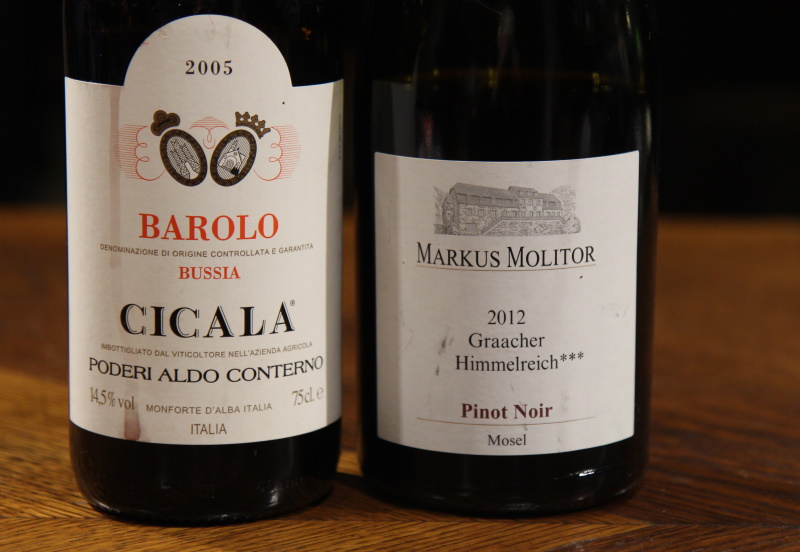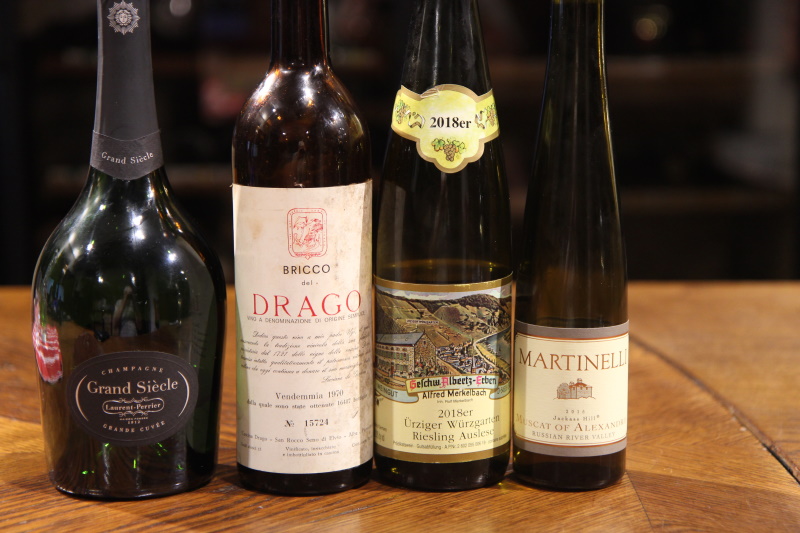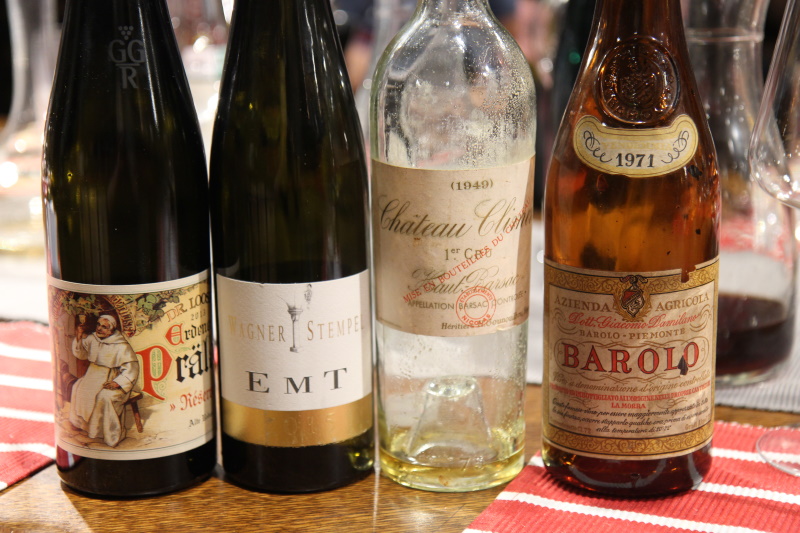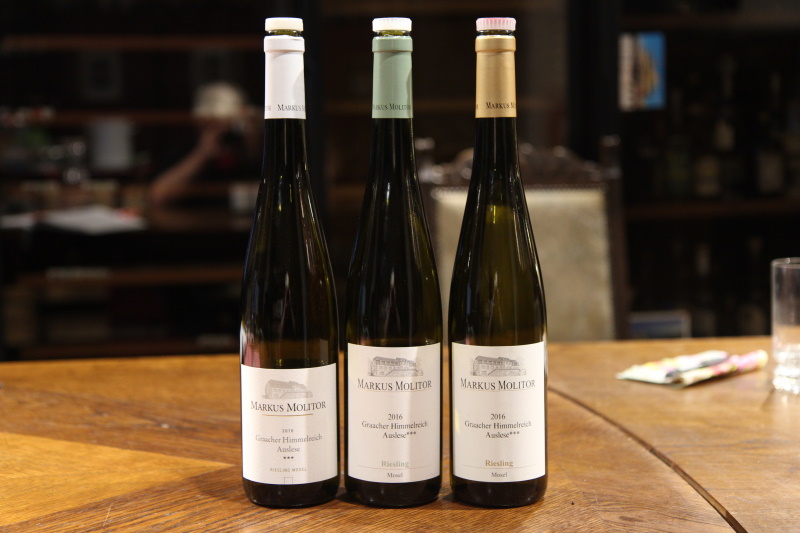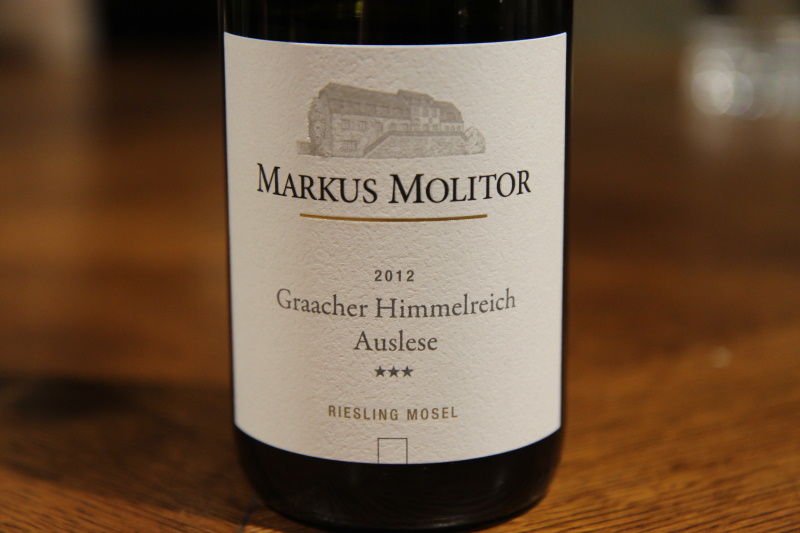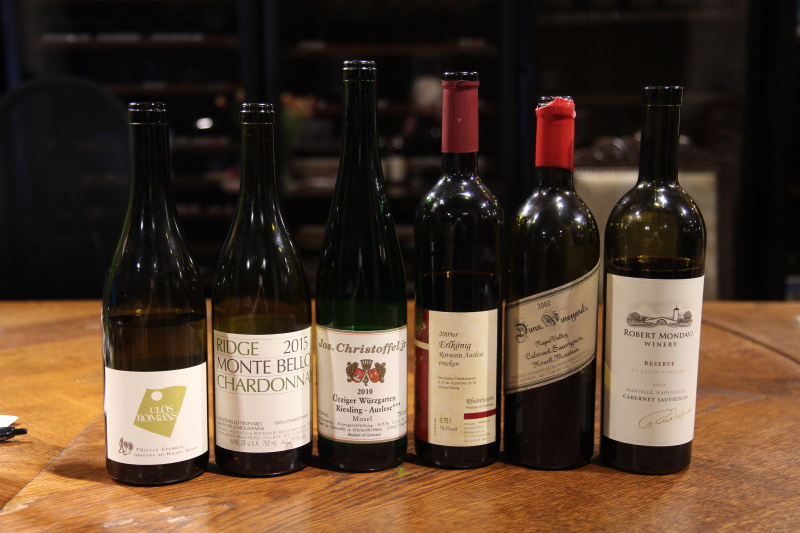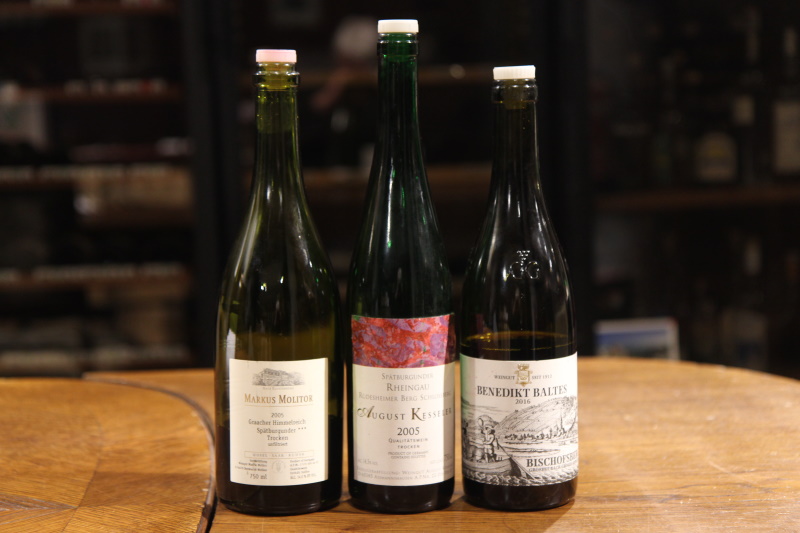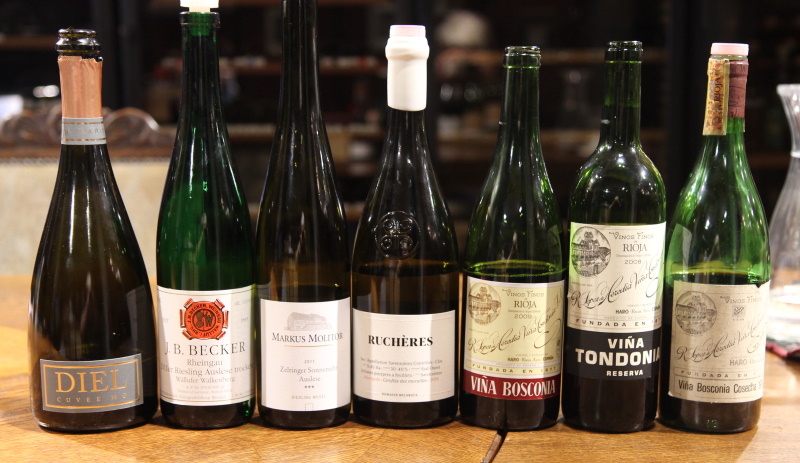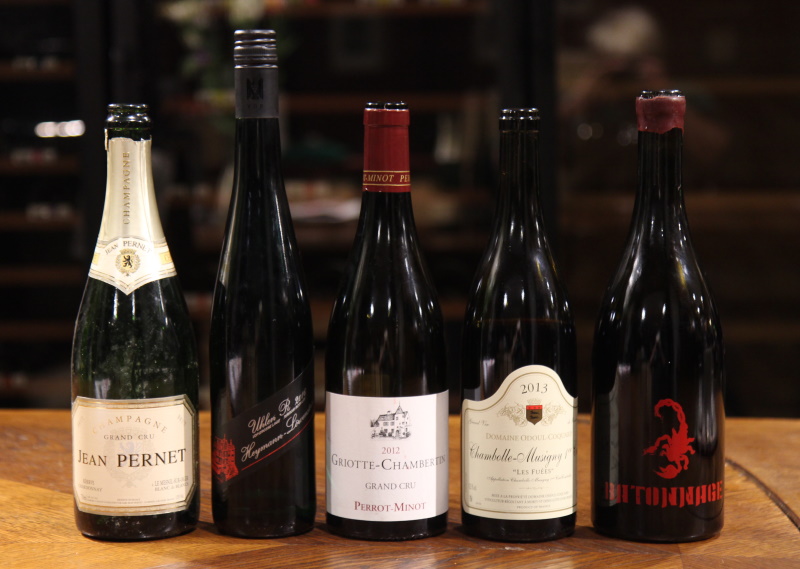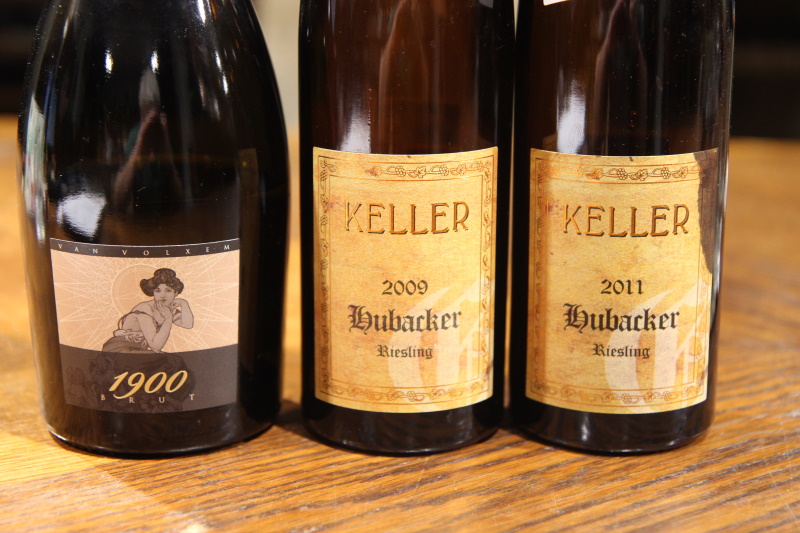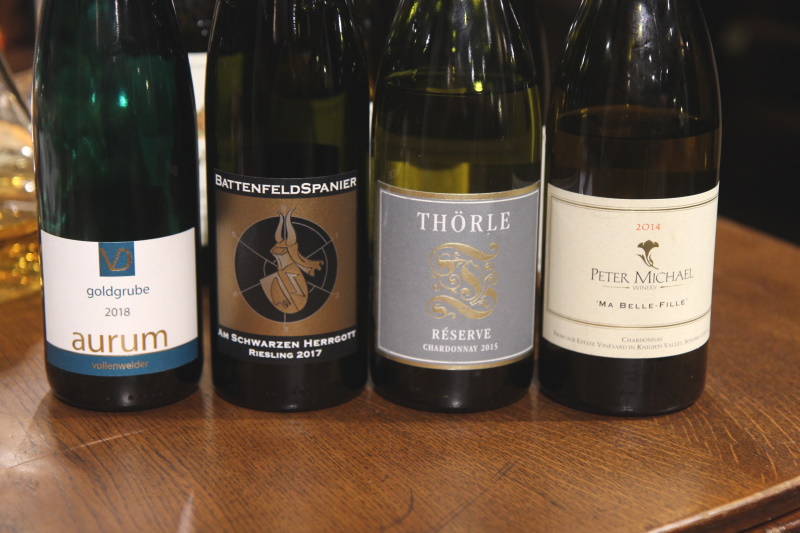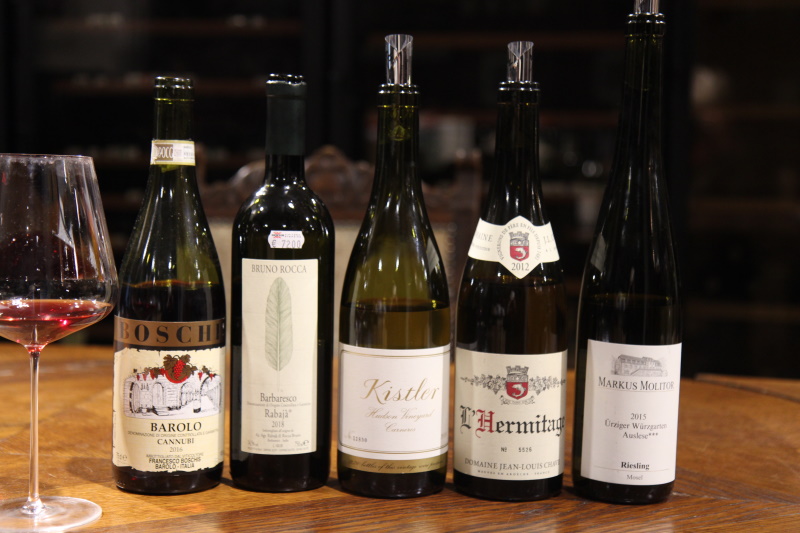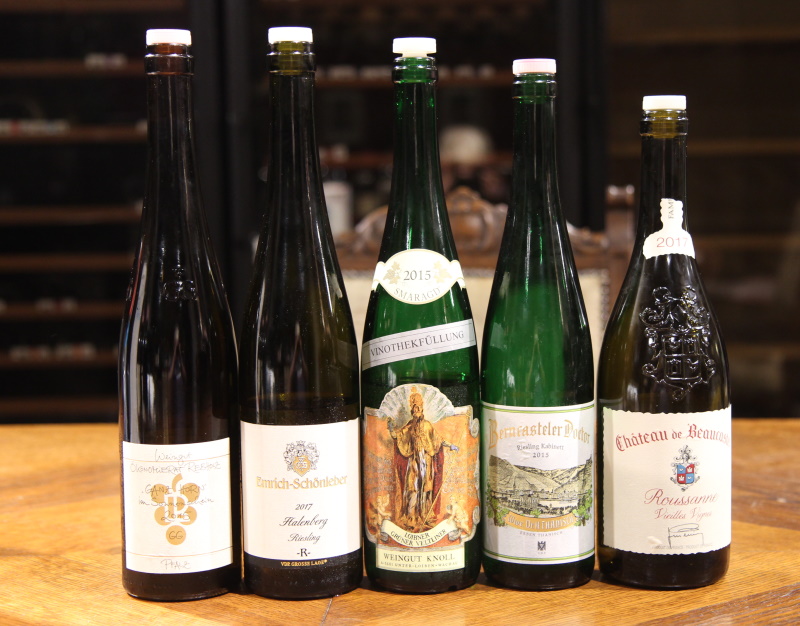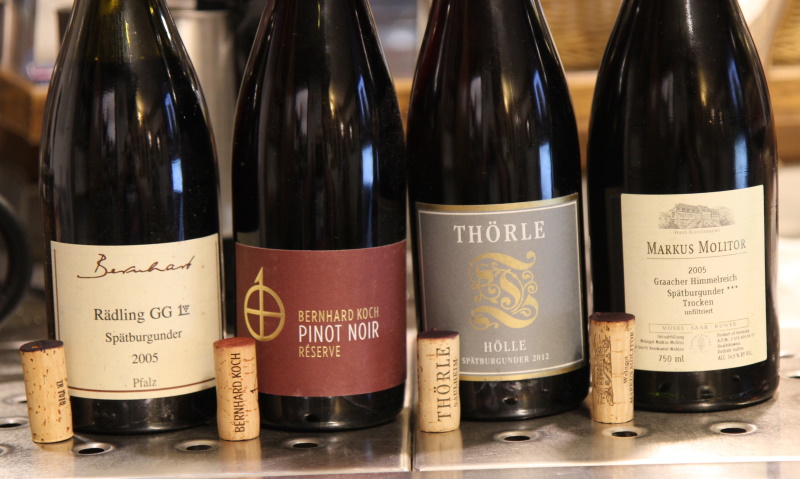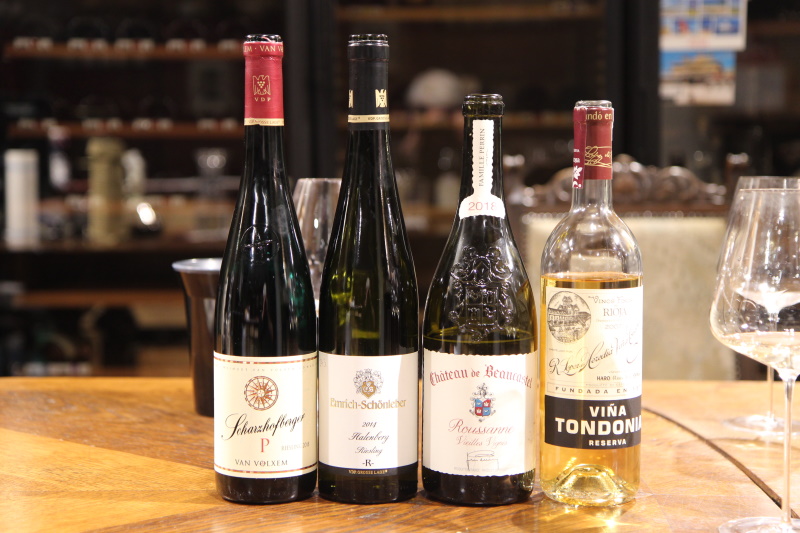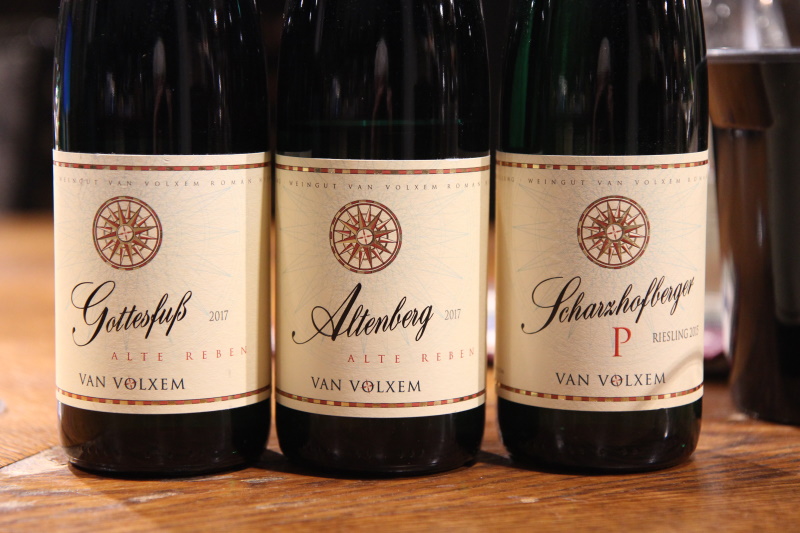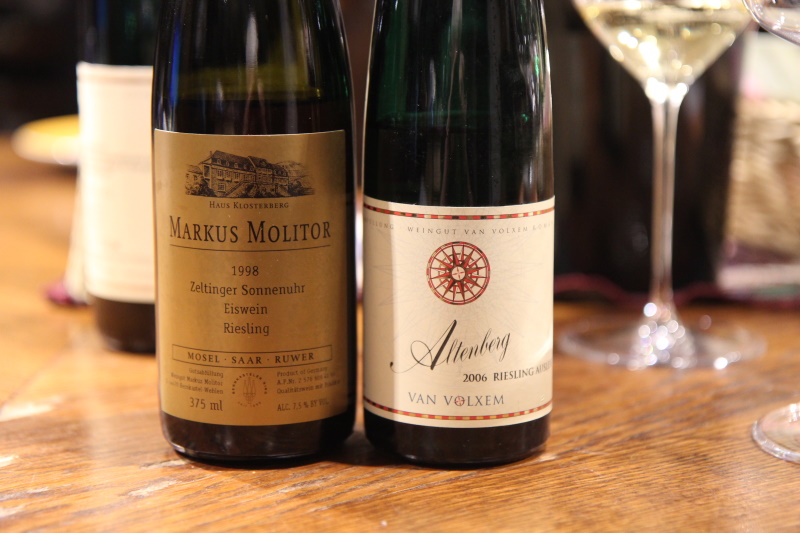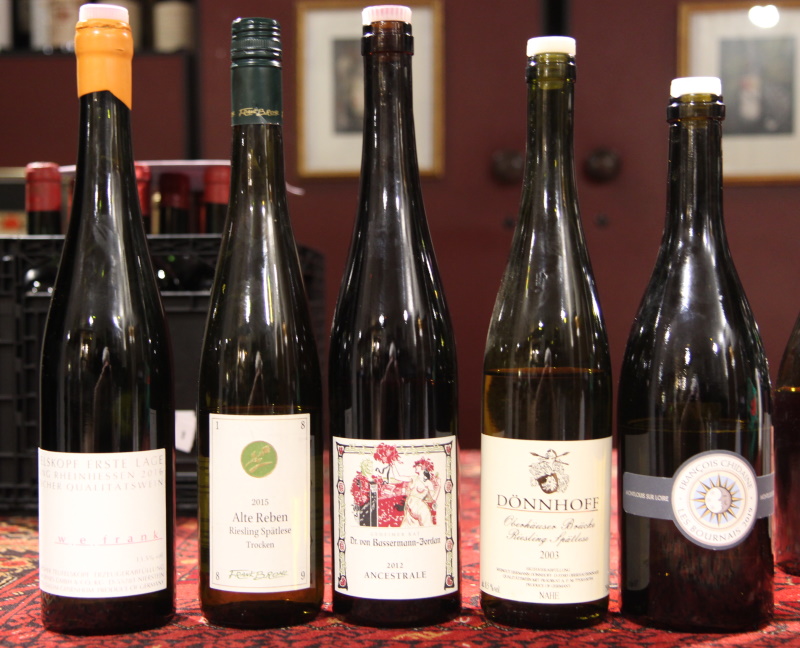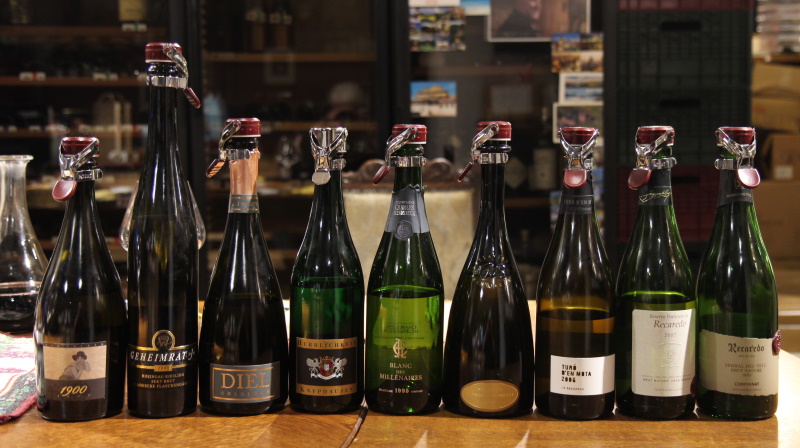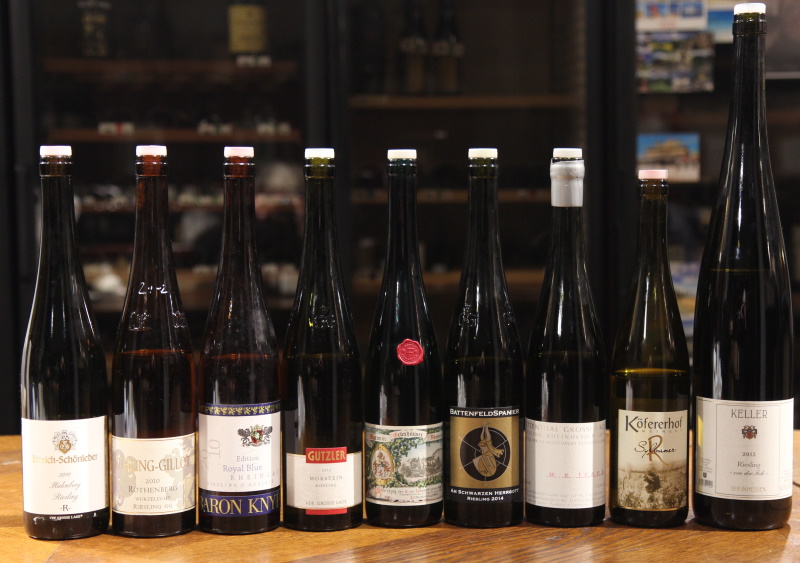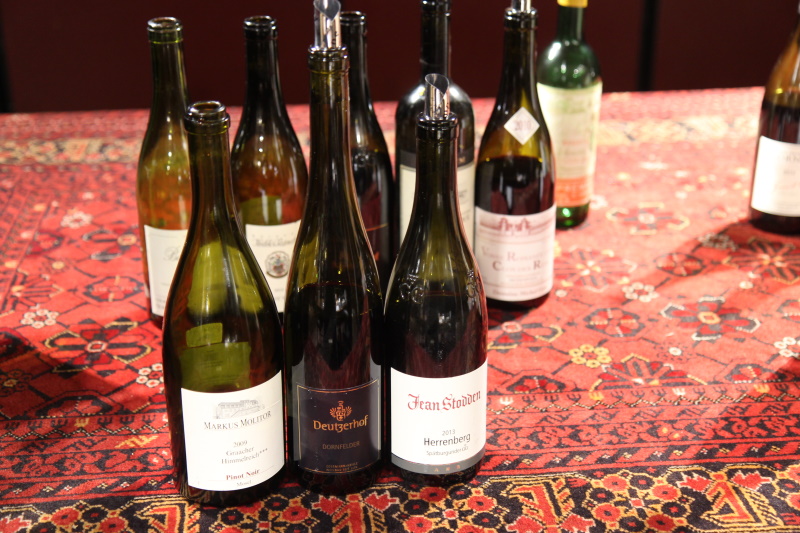
Who & Why
Find out who we are and why we do this: About us
There is a Riesling and a Cabernet, none of them tastes like its grape variety.
After the vacation, we return to old habits and taste great wines.
There are ripe Dom Perignon, Karl Erbes and Chapoutier. We still don't know why Karl Erbes hasn't sold out long ago, given its quality and value for money.
A sparkling wine made from Riesling with long yeast aging and a relatively young Champagne offer a very contrasting tasting this time.
Yes, one of the best red wines in Germany really does come from the Moselle, which is actually famous for its Riesling but not for red wine. In preparation for our Piedmont trip, we also drink a Barolo from Aldo Conterno, which is an alternative to the expensive Romirasco.
We are tasting Grand Siecle, Bricco del Drago, Ürziger Würzgarten and a fantastic sweet wine from Martinelli.
Two German Riesling wines, an awesome Chateau Climens and a perfect Barolo from 1971 were the basis for a long evening.
We have the rare opportunity to taste Molitor horizontally: the same vintage, the same vineyard, but all three different degrees of sweetness.
The Riesling wines of Markus Molitor need a lot of time to reach their peak. So, it is better to drink them not to early.
Some German producers are now so good that they are a real alternative for Burgundy.
This time: One of the best German sparklings, two amazing Rieslings, something from a new winery at the Loire and Lopez de Heredia in 3 variants.
Let's have a look at Jean Pernet Champagne, Heymann-Löwenstein Riesling Uhlen R, two great Reds from Burgundy and perhaps the best Red from Austria.
This time: Bubbles from the Mosel (or to be more precise from the Saar) and Riesling from Rheinhessen.
This time we have two Chardonnays from California and Germany and two Rieslings from Germany.
The white wines are from California, Rhone and Mosel. We brought the Nebbiolos back from our Piedmont short trip.
The German Spätburgunder and Pinot Noir is getting better and better and so there is now a large selection of great wines.
We had to taste some new arrivals in our wine cellars. Since there was fish for dinner, we chose white wines.
Four Rieslings from Nahe, Mosel and Rheingau plus Monte Bello Chardonnay resulted in a nice evening. Life is good!
We believe that the Mosel is more suitable for residual sweet wine than for dry wine. In our opinion there are only 5 players who produce really great dry Rieslings: Brohl, Markus Molitor (famous for dry, sweet and also red wines from the Mosel), Von Othegraven and especially Heymann-Löwenstein and Van Volxem. Here we have the best 3 vineyards from Van Volxem: Scharzhofberger Pergentsknopp, Gottesfuss and Kanzemer Altenberg.
Perfect for the dessert we had two fine Mosel sweets with low alcohol (both 7.5%), freshness and a complex sweetness.
Various white wines from Germany and Loire were the accompaniment to a pulpo salad.
High-end Cava, long on the lees, from Recaredo against other bubbles from Champagne and Germany.
It all started when we had a monkfish for dinner and wanted to have a perfect match. So we just wanted to have a good Riesling as accompaniment and opened some bottles. Finally we had a extensive Riesling tasting with 8 Riesling and one pirate.
Pinot Noir from Burgundy versus Pinot Noir/Spätburgunder from Germany. And the best Dornfelder. There have been some disappointments, so not all wine made it onto the picture.
Page 1 of 2

